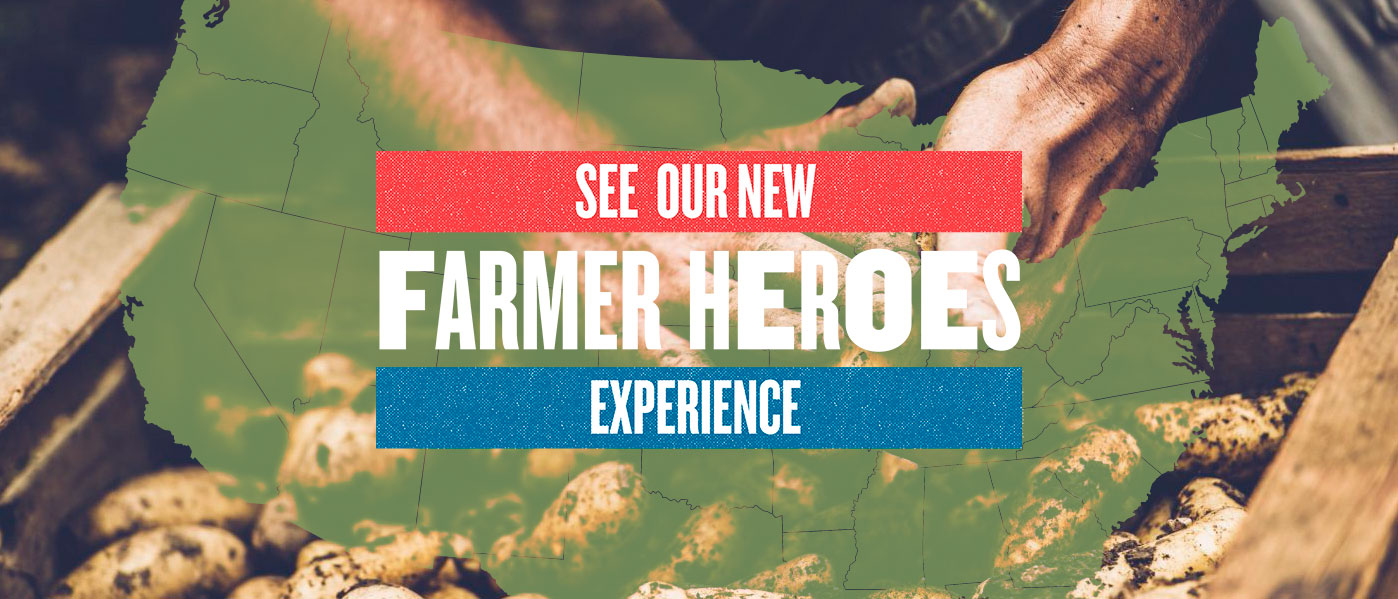More than 40 years after Secretary of Agriculture Earl Butz infamously declared “Get big or get out,” the mantra continues to decimate family dairy farms across the nation. The rise of factory dairy farms has fueled milk overproduction, a consequent decline in milk prices and an increased demand overseas. While milk production has increased by 40% over the past twenty years, the average U.S. dairy has only turned a profit twice; in other words, dairy farmers have taken a loss for 18 out of the past 20 years, and two-thirds of U.S. small to mid-sized dairies have had to shutter their barn doors in the midst of ceaseless consolidation (for more, see this report by our partners at Food & Water Watch).
Rural communities, as well as our natural resources, have suffered greatly. However, Stacy and Virginia Thomas of Clover Mountain Dairy in Washington State have renounced the culture of quantity, concentrating instead on quality. Virginia sat down with Farm Aid to share their journey that resulted in a micro-dairy that incorporates regenerative practices, value driven processes and a robust rural community.

Photo courtesy of Stacy and Virginia Thomas
Lori: So Virginia, can you share how you and Stacy ended up here at Clover Mountain Dairy?
Virginia: My husband Stacy’s family has hauled milk since 1946. He grew up riding milk trucks with his father and he worked at a dairy farm in high school. After high school, he joined the Coast Guard to pass time until he could get a commercial driver’s license to deliver milk. I grew up in a family of fishermen and shrimpers in North Carolina. I knew nothing about dairy farming. I went to college and got a degree in Latin, which is a whole other story! I also joined the Coast Guard to become a navigator and was based in Wisconsin where I met Stacy. Of course, Wisconsin is America’s dairyland. I fell in love with him and his passion for dairy. We both made careers in the Coast Guard, putting the dairy dream on the back burner until we found 40 acres an hour north of Spokane in 2010 which eventually became Clover Mountain Dairy.
Lori: You two have certainly bucked the trend of scaling up. What contributes to your ability to operate at this micro-level and still turn a profit?
Virginia: A lot of times people ask: “Why don’t you milk more cows?” because the normal business model is to go big for efficiency of scale. I don’t think the expenses associated with a larger operation are acknowledged enough. Think about all the stuff you have to do and buy to get bigger. If you’re producing more, you better have a market. I think sometimes people think “if you build it, they will come,” but it takes a lot of work to find those people and to get them to want to buy your product. We could have grown bigger if we wanted to, but it’s not just about the milk, you know?
We only have eight milk cows right now. We’re balancing how much work we want to do against how much forage and hay we can grow; we’re also diversifying, which takes energy but will pay off in the long run. The phrase we live by is: “it’s not what you make, it’s what you keep.” We grew the business very slowly, which allowed us to mitigate risk and avoid a heavy debt load.
Lori: Your Dairy’s YouTube video “Starting our Dairy Farm from Scratch” reflects your deliberate, patient approach. There’s a line, “and the farm waited,” that repeats throughout. Can you expand on that?
Virginia: By 2007, we knew we wanted to farm, and while we bought our land in 2010, we didn’t actually start Clover Mountain Dairy until 2020. It was just raw land and we didn’t know anything about starting a farm. We worked on dairy farms, one of which shipped to Organic Valley [a dairy co-op], so we learned a lot about organic certification and decided that’s the way we wanted to go. We spent ten years building fencing, a house, a barn and seeding pasture. I guess you could say we strictly started when four nine-week old Jersey calves arrived. Our herd increased slowly, we started bottling milk on the farm and we had no idea that any of it would sell. Even with our slow build up, the learning curve was straight up as we tried to figure out animal care, field maintenance, processing, marketing and regulations.
That 13 years between buying land and officially starting the farm allowed us to financially prepare as well. Front loading a lot of our expenses when we had income from the Coast Guard and maintaining a buffer for emergencies was key. We found old equipment we could repair to save costs. If we didn’t have that off farm income, if we had a high debt load, or if we had to pay out the nose for health care, we couldn’t do what we’re doing. It was a long road.
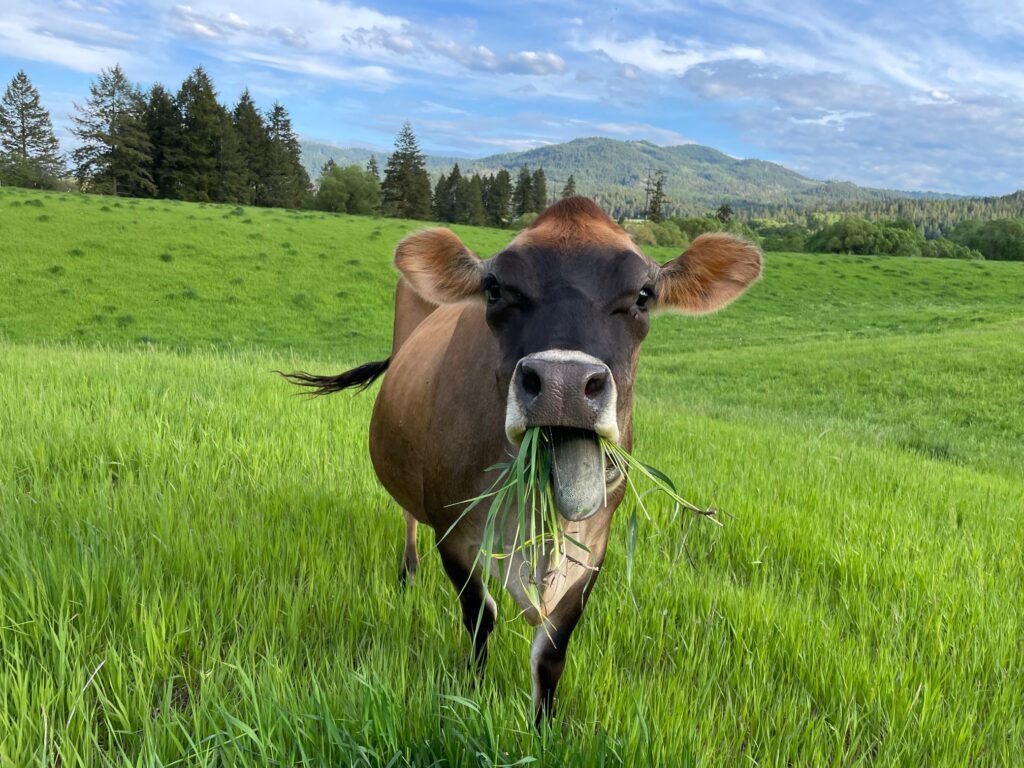
Photo courtesy of Stacy and Virginia Thomas
Lori: I’m sensing some themes. One is that you were intimate with this lifestyle of long hours, sacrifice and stress from your military years, which prepared you for similar conditions during your early farming years. Another is that you’ve positioned yourself to contain input costs and sell your products for what they’re worth.
Virginia: Yes, I think all of that is true. Our cows do much of the work just by being cows, and we let them do that. They spread nutrients in the most natural way possible as they make their way through the different pastures, which eliminates our need for fertilizers. We only milk once a day, the cows behave as a herd, and the calves are with their moms. So they come and go as a herd from the milking barn out to where they graze and back again. In the summer, we’re moving them every day but really, their care requires about two hours a day. That allows us to focus on all the other aspects associated with the farm.
Lori: Your cows are your soil management plan.
Virginia: Yes, and keeping them as healthy as possible is critical. Our vet bills tend to be lower when they’re on pasture. Their diet is more varied and we use holistic, organic methods to boost their immune system. Prevention rather than treatment when at all possible.
Lori: Your farm story weaves several threads of revenue diversification through it. Can you tell us more about that?
Virginia: I know we’ll talk about the Creamery later, but it’s a key part of our diversification. Stacy is now the third generation of milk haulers in his family so that’s another source of revenue. Obviously, when we started making cheese, that was another way to diversify.
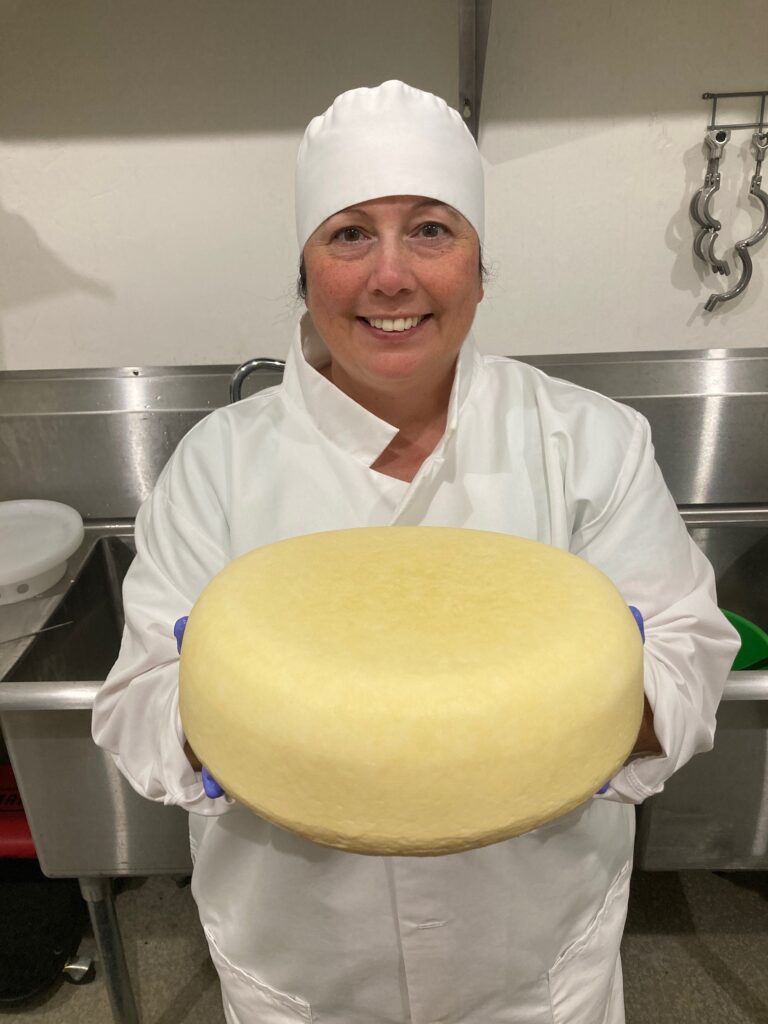
Photo courtesy of Stacy and Virginia Thomas
Lori: How did the cheesemaking come to be?
Virginia: It’s been a journey! I thought cheesemaking was this alchemy, you know, this secret art. I told myself: “I’m not gonna be able to do that, it seems very complicated.” But a product with a longer shelf life appealed to us. Milk’s shelf life is normally about 14 to 18 days so you’re constantly in that cycle of production. Because our work life balance was a priority, we were aiming to work more seasonally, at least when possible so we could carve out a break each year. We only milk from May through February, which means we had nothing to sell in the spring.
I first started with yogurt, which allowed me to get more comfortable working with cultures and acted as a gateway. We did a lot of research, but at some point you just have to start doing it. I feel like over the last three years, I’ve slowly acquired all the different pieces to truly become a cheesemaker. It comes back to balance and products that fit within our system. When we decided to age our cheese, we first bought a freezer and put a controller on it to moderate the temperature, like a rigged cheese cave, and that worked well but it also made us realize that we needed a bigger space so we decided to put the cheese in a hole in the ground and see what happens. This led to our underground cheese cave. It adapts to the underground temperature, which also dictates what kind of cheese we can craft. It’s been a year so far and it’s working great!
The one thing I have learned about farming is that things move at the speed of nature, not the speed of our plans. We try to control nature and nature wants to do its own thing. As farmers, we need to realize that it’s a reciprocal relationship. We don’t call the shots.
Lori: There’s that theme again, starting small, working with what you have, getting comfortable with the enterprise, and then expanding your infrastructure. You’re inherently avoiding overexposing yourself to risk.
Virginia: I didn’t realize we were doing all of that! Part of our business model has always been to go slow. Then, of course, nature humbles you. For example, when we were first getting new seed out in our fields, we read reports about dormant fall seeding as a way to get a jump on the spring pasture. So during the fall, you put out seed and it settles into the ground over the winter, then it emerges earlier in the spring, but we have a ton of wild turkeys around here and they are seed vacuums! So we put out all this seed and the turkeys are inhaling our investment. You know, on paper, it was a great plan!
The one thing I have learned about farming is that things move at the speed of nature, not the speed of our plans. We try to control nature and nature wants to do its own thing. As farmers, we need to realize that it’s a reciprocal relationship. We don’t call the shots.
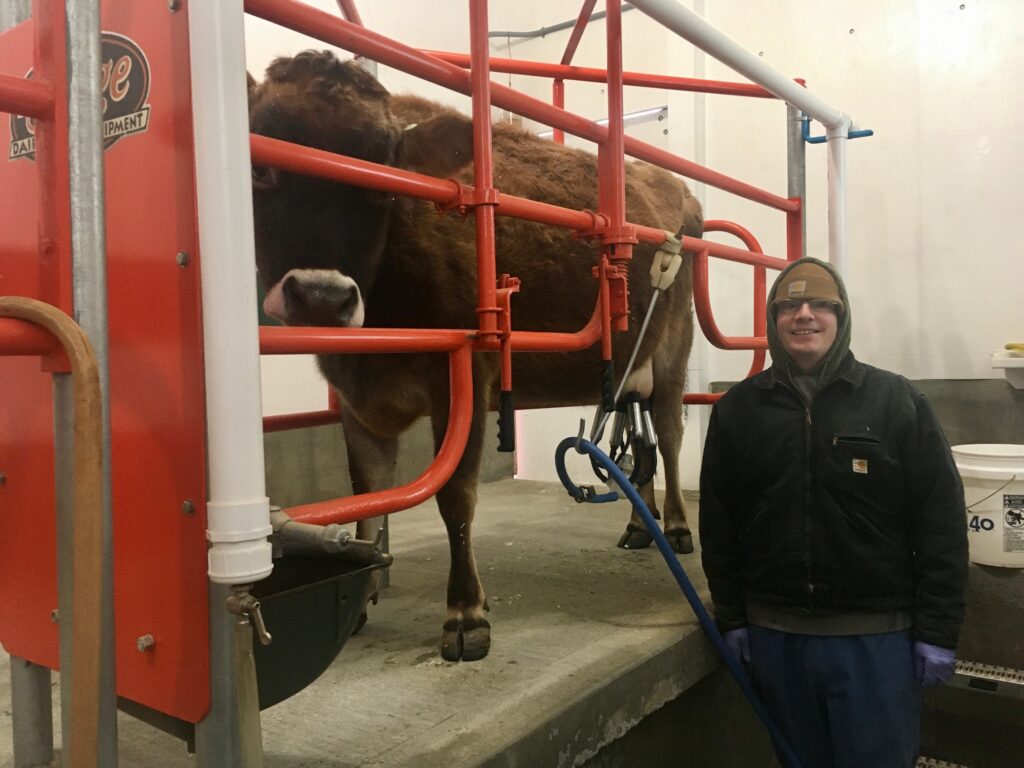
Photo courtesy of Stacy and Virginia Thomas
Lori: Speaking of nature, you’ve been on this land now for almost 15 years. What changes are you noticing over time?
Virginia: For us, the biggest change was when we added cows to the fields. Moving them every day, they’re spreading their own fertilizer. We’ve been doing soil tests every year since 2012. Organic matter was slowly increasing before the cows. When we added cows in 2018, we went from 1% to 4% soil organic matter, which is incredible given this semi-arid climate and no irrigation. Forage and hay yields have increased as well. We can see the difference!
In terms of if we are seeing any changes in our local area connected to climate change: there have been more extremes, especially the last couple of years. For instance, two years ago it was really hot, like 109 degrees, but this last winter, it was -21 degrees. Those are huge extremes for our area and wildfires are worse for sure.
Lori: So, you are grazing rotationally? That soil organic matter must aid water retention as drought concerns grow in the West.
Virginia: Yes. There’s a synergy between the cows and the fields they’re grazing, the rotation schedule, how high they’re grazing, their hoof action working the manure in and setting seeds. It’s helping select different types of species growing in the pasture. It’s really beautiful to see the difference between where they have and haven’t been grazing, and the cows have a more varied diet.
Lori: As veterans, did you take advantage of any veteran farmer support that’s available?
Virginia: Yes. We received a grant from the Farmer Veteran Coalition back in 2018 for a PTO generator, which is a generator that attaches to the tractor and can create backup power for our cattle fencing, water for our cows, and cooling our milk. It’s an important piece of our resilience.
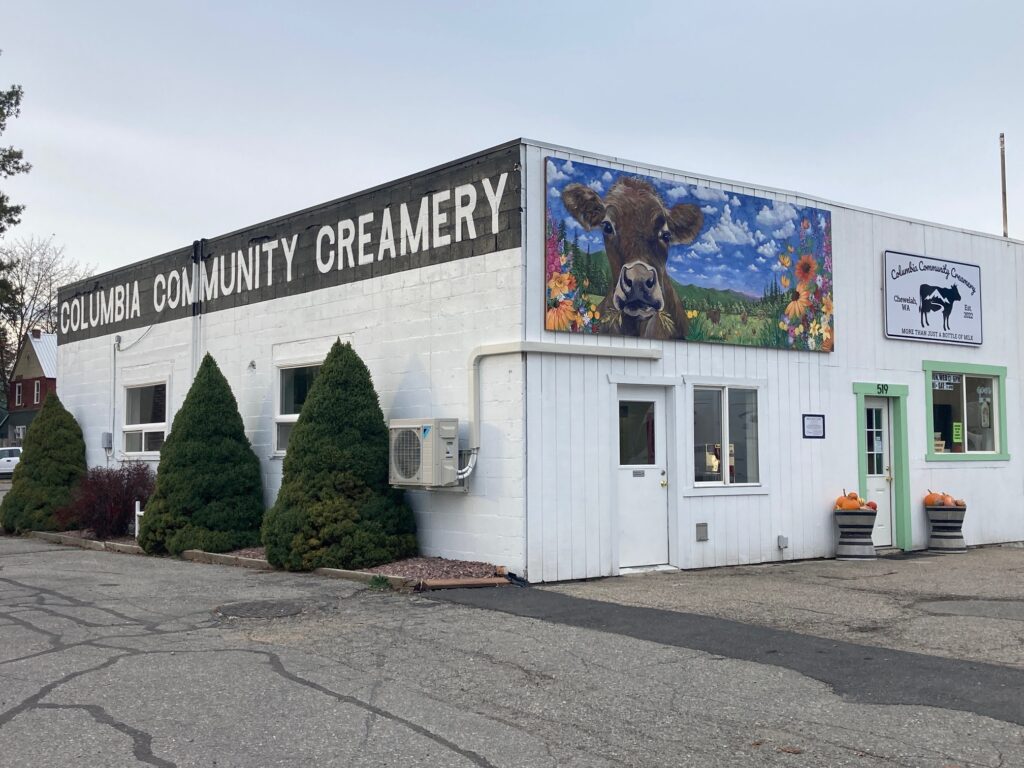
Lori: And in the midst of all these demands, you two became deeply involved in getting the Columbia Community Creamery off the ground. Can you share why this endeavor is so critical for the local foodshed?
Virginia: There were around 360 dairy farms in just Stevens County alone back in the sixties. Now there are nine. As small farmers, we could see, despite all the despair, that there was an opportunity to grow. If you sell to the public directly like us, it takes a lot of effort. For small producers, there’s limited market access because either you farm and sell raw milk, which involves prohibitive insurance premiums and exposes your farm to liability, or you have to do your own processing, distribution and marketing. Most people just want to farm and be with the cows. I mean, that’s the whole problem. We all have a cow problem!
On the flip side, a lot of people were seeking local products, especially after the pandemic when national supply chain weaknesses were laid bare. Better nutrition, transparency, and supporting your local economy have all surged over the past few years. When we were watching the news about all those family dairies in New England dumped by Horizon in 2021, I said to Stacy: “It’d be great if there was a creamery again in Chewelah.” Stacy remarked “Yeah, we should start one.” And the fuse was lit.
So we approached some local people who would give us good counsel and potentially serve as board members. The Creamery formed a nonprofit, applied for the Washington State Department of Agriculture Infrastructure Grant and were lucky enough to be awarded just under $456,000. Support came from lots of different organizations like Tri County Economic Development, Washington State University Extension, our Conservation District, our local elected officials, and other community members. The Creamery rented space in the fall of 2022 and opened in June, 2023. Three Stevens County dairies are involved with a potential fourth in the pipeline. The creamery’s products include regular milk, chocolate milk, yogurt, ice cream, cafe au lait, and eggnog during the holiday season.
The Creamery staff has grown considerably as well. We now have a full time processor, four part time retail staff, a high school intern, a part time Education coordinator and a part time Executive Director, and the milk is paying for it all. We’re preparing to build out our educational programming; currently, the Creamery offers workshops like cheesemaking for the public. We’ve been very fortunate to have the community’s support. That’s the key and that’s why the word community is in the title. The Creamery has reconnected the farmers to the local community and we’ll see what happens. So far it’s been really great!
As a 501(c)(3) nonprofit organization, the Creamery can be the Creamery and the farmers can be farmers. We don’t charge hauling fees and we don’t distribute dividends either, like a cooperative would. The farmers are paid a flat, fair price per 100 weight of milk. It makes it very simple.
Lori: What other role does the Creamery play in the life of your fellow dairy farmers?
Virginia: The Creamery’s mission isn’t just to feed the public; it’s to keep existing dairies alive and help new dairies get their start. The larger dairy farms around here ship to a large regional dairy cooperative. What we’re focusing on is smaller, diversified farms that desire more work life balance and can weather challenges more effectively. One of the reasons kids don’t want to dairy farm is because they grew up milking their herd every morning and every evening; that’s a really constrained lifestyle with not much to show for it. The Creamery provides technical assistance to beginning dairy farms, locates equipment, test products etc. One of the new dairy farms that joined us wanted to make butter, so we helped them write their WSDA Infrastructure grant application to purchase equipment and they got the grant. That really makes your day! The Creamery also helped set up their plant, worked with the local dairy inspector, and once they’re up and running, they’ll have retail access through the creamery.
With some of our milk going to the creamery, Clover Mountain Dairy will be able to focus 100% on cheese production, which as a value added product, commands a respectable price. We plan to make it available to the public through our farmers market, the creamery, the mail, and select stores. Then there’s an opportunity to sell some to area schools through the farm-to-school program. These kinds of opportunities didn’t exist as much even a few years ago.
Lori: So, now that the rush is ebbing, how are you feeling about the Creamery?
Virginia: We knew it needed to live and breathe as a community thing but I need to live and breathe as a “Virginia thing” so I’m looking forward to a spa day! I think a lot about farmers and mental health. When there were a lot of dairy farms, you used to have social organizations like the Jersey club where folks would meet for dinner or somesuch. I just think about how isolated a lot of people get when they’re just on their own farm, like they’re on an island. The board recognized early on that one of the benefits the creamery offers our dairy producers is interaction with the community.
There’s this pressure as farmers to be strong, and farmers are often the strongest people I know but we deal with a lot of stress and we don’t like to admit it. I wasn’t taking care of myself like I should, so over the last two months I’ve been working on meditation and getting back to my list of strategies that insulate me from stress. I do this for myself but also the creamery, the farm and my husband. I take time to really look at the farm when it’s all green. It’s just more of a priority to really savor the things that surround me.
Lori: Wise words indeed. Farming can be so all encompassing, it’s easy to forget sometimes that you’re actually somebody outside of that capacity. Can you talk a little bit about your foray into comedy as a means of exploring yourself in a more holistic way?
Virginia: So, when I attended a Farmer Wellness Weekend Workshop, it opened my mind to how I approach life. I didn’t realize that I use humor when I process stuff or talk about things. Stacy and I also rely on comedy to decompress at the end of the day. I began to almost feel called, in a weird way, to make farmers laugh. So, I took a comedy class online through Second City in Chicago for several weeks. That educational exercise was good for me as it required me to disconnect from farming. You have to stand up in front of people who expect you to make them laugh which is a lot of pressure! I like the idea of giving people what I’ve enjoyed, something that makes me laugh, especially because my content is so unique to farmers. It also made me appreciate myself as someone in a way that’s totally apart from farming.

Photo courtesy of Stacy and Virginia Thomas

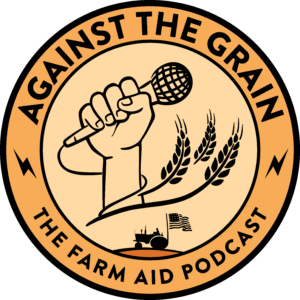 In episode two, called “Hoodwinked,” you’ll hear from artists Dave Matthews and Allison Russell, former contract poultry farmer and whistleblower Craig Watts, and organizer Tim Gibbons about the scourge of industrial agriculture that has come to dominate our farm and food systems in recent decades. They’ll explain how this system evolved and propose solutions for how to get out of it.
In episode two, called “Hoodwinked,” you’ll hear from artists Dave Matthews and Allison Russell, former contract poultry farmer and whistleblower Craig Watts, and organizer Tim Gibbons about the scourge of industrial agriculture that has come to dominate our farm and food systems in recent decades. They’ll explain how this system evolved and propose solutions for how to get out of it.




